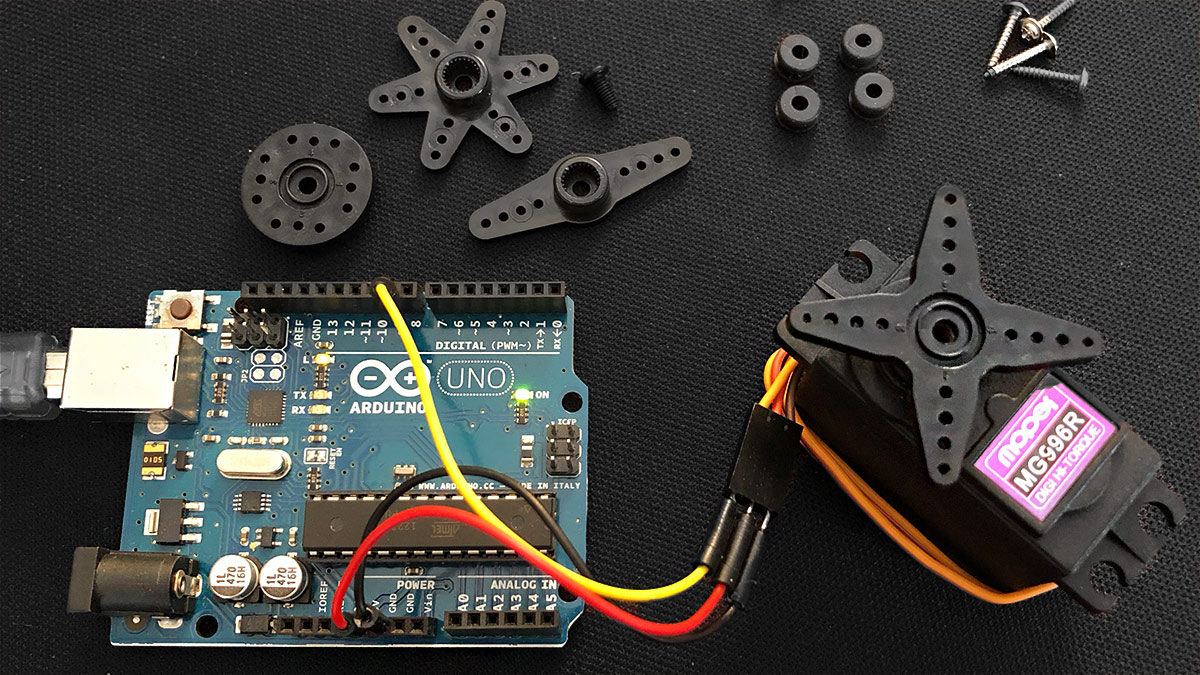
Connect the motors on each side like in the picture.In the picture, there are two regular electric motors, but in this exercise, we’ll use geared motors. Otherwise, you can follow the instructions in the video. If you have black geared motors, attach both of them to the acrylic boards according to the image below. In the video, two blue servomotors are attached to the vehicle. In the video below, there’s instructions for building the vehicle with this kit! Maker kit includes a DIY-kit that consists of plastic boards, bolts, nuts and spacers. If you don't have it, you can improvise and build a frame for your robot with e.g. If you don't have these batteris or the connector, you can power both the Arduino and the motors with the 9V-battery for a short period of time!

This is used as a power source for the motors. Most importantly, you can use the microchip to control the rotational speed and direction of the motor.
SERVO MOTOR ARDUINO BREADBOARD DRIVER
This driver is a microchip that consists of several components, which can amplify the current coming from Arduino, prevent charges produced by the motors, and thus protect Arduino's pins.

You'll need this part if you use black geared dc-motors.

You can use either option for this exercise! In your Maker kit, there's either two black geared DC-motors or two blue rotating servomotors. In addition to Mehackit-board (or Arduino), breadboard, wires, and USB cable, you’ll need: PartĢ x Geared DC-motor or 2 x Rotating servomotor In this exercise, you can use geared DC-motors or rotating servo-motors.įirst, we’ll build a vehicle running on wheels, that moves around by itself. The simplest motor is DC (Direct Current) -motor. With Arduino, you can control all normal electric motors: solenoids, servos, stepper motors, vibrating motors, and DC motors. There are a lot of techniques to build a moving robot, but of course, you’ll need motors to produce motion.


 0 kommentar(er)
0 kommentar(er)
